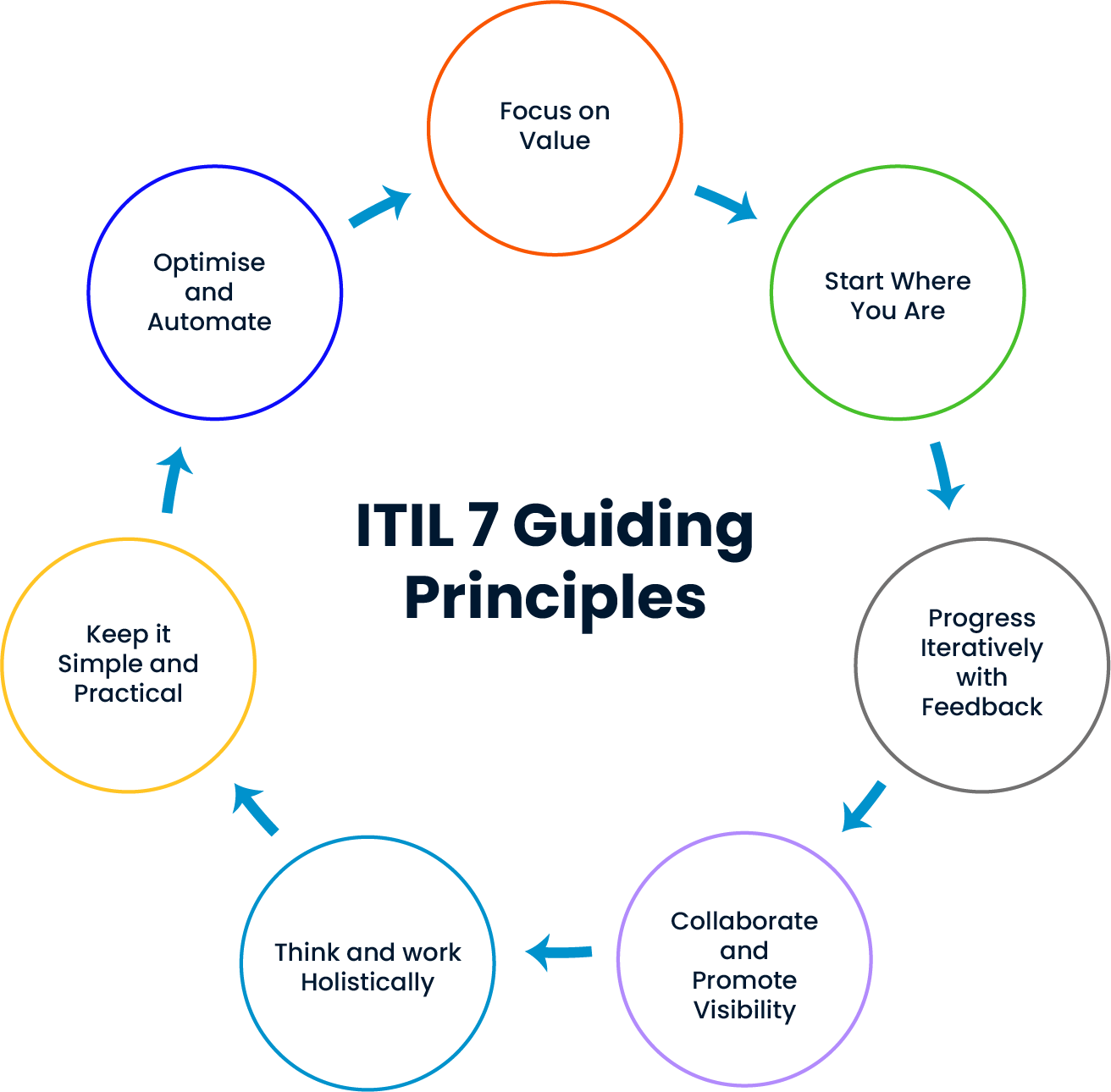
The IT Infrastructure Library (ITIL) enables organizations to align their IT service management (ITSM) processes with global standards, making them scalable and continuously improvable. ITIL offers a service management approach that integrates not only technology but also processes, people, and business strategies. This model facilitates the clarification of performance metrics such as SLAs (Service Level Agreements) when developing a service management strategy, thereby simultaneously enhancing service quality, user satisfaction, and operational efficiency.
In modern ITSM applications, ITIL’s seven core processes shape the entire operation, from decision-making to automation strategies. These principles play a critical role in the success of digital transformation projects by making IT services faster, more reliable, and value-driven.
To learn about the evolution of the ITIL framework, ITSM and current best practices, you can also read our article titled ‘’ What is ITIL 4? Benefits for Businesses.’’
In this article, we will examine the processes at the heart of the ITIL framework and discover how these principles contribute to the success of IT service management in businesses and why they are critical to gaining a competitive advantage.
What Are the Core Processes of the IT Infrastructure Library?
The Information Technology Infrastructure Library (ITIL) does not merely provide process definitions; it forms the backbone of the IT service management (ITSM) architecture, making the service lifecycle manageable from start to finish.
Every step, from incident management to change control, can be measured and optimized using the principles defined within the ITIL framework. To gain a deeper understanding of this strategic link between ITIL and ITSM and how the core concepts are shaped, check out our guide What is ITIL? How is it Related to ITSM?
- Incident Management – Ensures rapid response by minimizing the impact of service interruptions.
Example: When your website suddenly becomes inaccessible, this practice kicks in and teams resolve the interruption within minutes, allowing users to access the service again.
- Problem Management – Identifies the root causes of incidents and provides permanent solutions.
Example: Noticing that the same network failure recurs once a month, the team identifies the root cause as outdated hardware and replaces it to prevent the problem from recurring.
- Change Management – Ensures that changes are implemented in a controlled and planned manner.
Example: Before a new software update is implemented, it is tested in a test environment, risks are analyzed, and it is gradually rolled out to the live system.
- Service Request Management – Responds to user requests quickly and consistently.
Example: When an employee requests an email account, the request is approved within minutes through an automated workflow, and the account is created.
- Service Level Management – Defines, tracks, and reports on SLAs.
Example: A commitment is made to the customer that support requests will be responded to within 4 hours, and the system automatically sends alerts to managers when this timeframe is exceeded.
- Configuration Management (CMDB) – Manages the inventory and relationships of IT assets.
Example: When a server fails, all applications and users connected to that server can be quickly viewed through the CMDB, allowing for an analysis of the impact.
- Continual Service Improvement – Ensures that services and processes are regularly evaluated and improved.
Example: Based on data obtained from customer satisfaction surveys and performance reports, support processes are reorganized and optimized every quarter.
These processes enable organizations to make their IT operations faster, more reliable, and more customer-focused, creating a competitive advantage.

How Are Core IT Infrastructure Library Practices Applied in ITSM?
The successful implementation of these critical processes defined within the Information Technology Infrastructure Library in an ITSM environment is essential for organizations to gain a competitive advantage in the digital age. The following strategies focus on improving the quality and effectiveness of IT services:
- Value-driven management: Prioritize business value at every stage of IT services to align your service management strategy with your business objectives.
- Effective use of existing resources: Analyze the organization’s existing processes and infrastructure to prioritize improvement opportunities.
- Step-by-step development: Progress improvement and digitalization projects in small, manageable steps by continuously gathering feedback.
- Transparency and collaboration: Use tools that enable open communication and visibility among all stakeholders to enable early detection and rapid resolution of issues.
- Holistic perspective: Manage IT processes in an integrated manner that encompasses people, technology, data, and supply chain components.
- Simplicity and practicality: Remove unnecessary complexity from processes to gain speed and flexibility.
- Automation and optimization: Integrate automation solutions to reduce manual tasks, thereby increasing efficiency and minimizing human error.
These metrics prove that ITIL is not just a theoretical framework, but rather a structure that creates tangible business value in daily IT operations.
With Cheetah digitized processes help businesses stay competitive in today’s modern environment and enable IT service management to be approached in a more strategic manner. At this point, SPIDYA IT Service Management offers a current, 100% locally developed, AI-powered, and modular structure that is fully compliant with ITIL standards, enabling you to transform your business’s IT operations!




